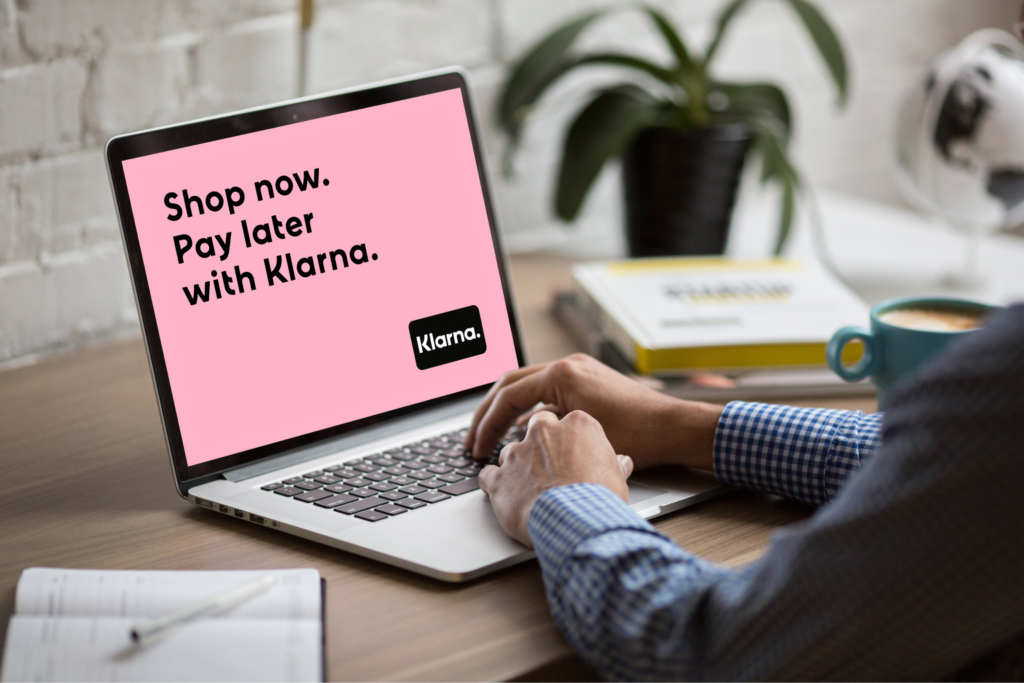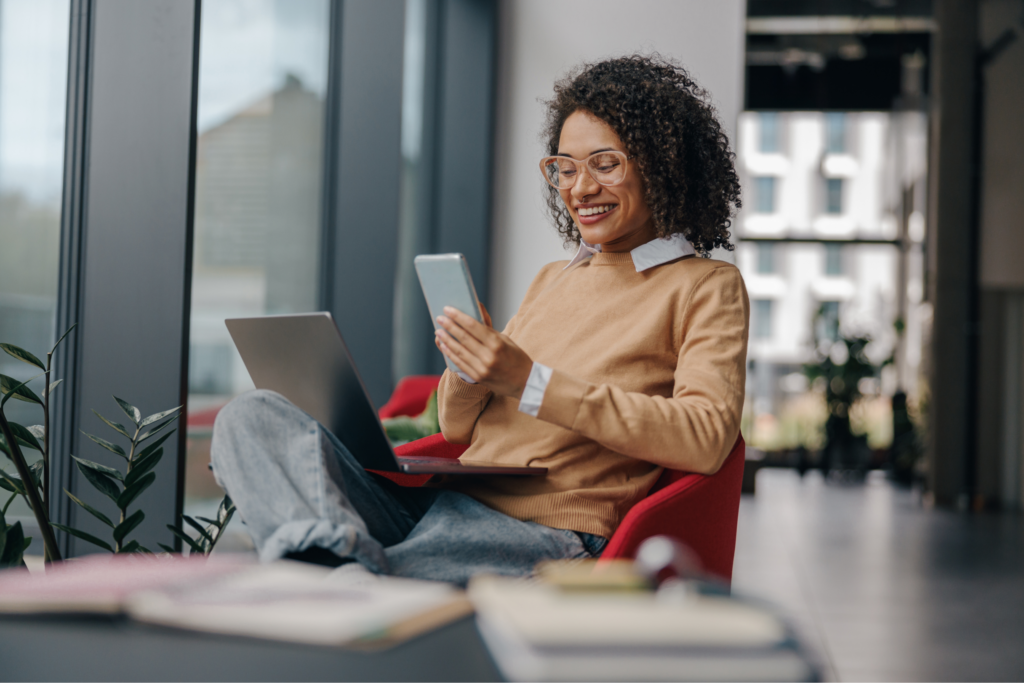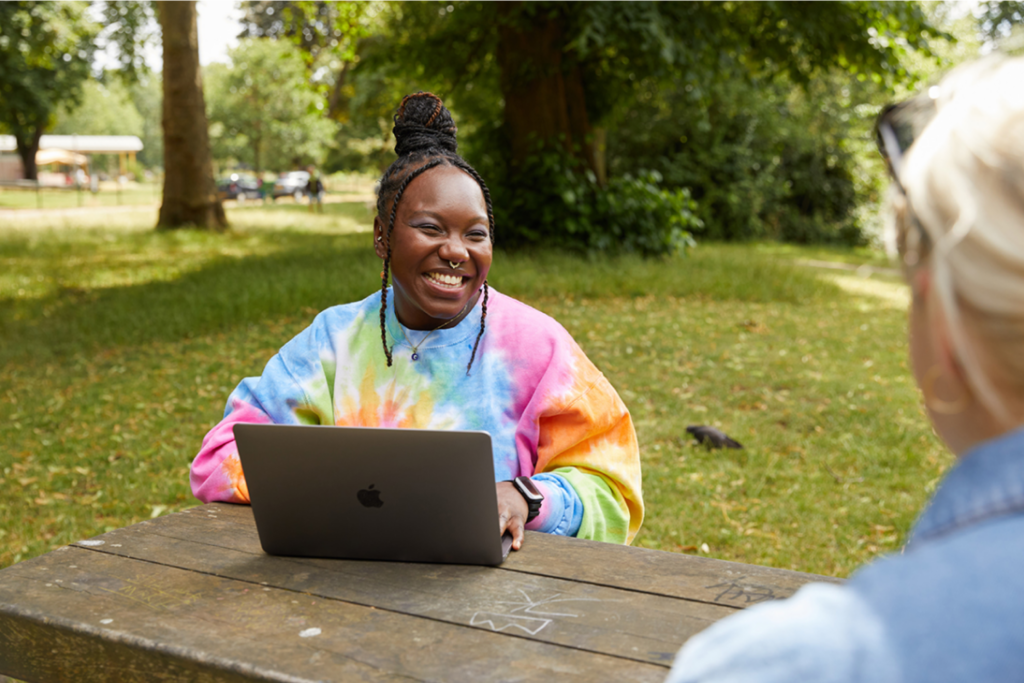Start a custom printing business with Printify
Think you need a pile of cash to launch a business? Think again.
In 2026, resourcefulness can beat capital. With the right idea, smart tools, and a little hustle, you can kickstart your venture without spending anything upfront.
This guide breaks down the practical steps on how to start a business with no money – no fluff, just real action.
This post may contain affiliate links, which means we may earn a commission if you make a purchase through those links. This comes at no additional cost to you.
Key takeaways
- Start a business without money by choosing low-cost business models like Print on Demand, affiliate marketing, or selling digital products.
- Many small businesses launch successfully using free resources, service-based business ideas, and smart marketing strategies to reach potential customers.
- A clear business plan helps you stay focused, define your target market, and manage cash flow – even when you’re starting with zero money.
- Printify makes it easy to start an online business with no money by offering free tools, automated fulfillment, on-demand production, and hundreds of customizable products.
- Want funding options? Research angel investors, crowdfunding, or microloans to cover startup costs without relying on traditional bank loans.
Businesses you can start with no money
Starting a business doesn’t have to mean draining your savings or finding investors. In fact, some of the best business ideas in 2026 require little to no startup capital. If you’ve got some creativity and a plan, you’re already ahead of the game.
Here are some of the top businesses you can start with no money.
1. Print on Demand (POD)
Starting a business from home with no money is easy with Print on Demand. Instead of paying for inventory, you create custom designs and add them to blank products like t-shirts, mugs, or tote bags.
When someone places an order, a third-party provider prints and ships the product for you – you never have to manage stock or spend money upfront.
Create your designs using free tools like Canva or outsource design work on platforms like Fiverr. Then, sell through your own online store (using Shopify, Wix, or Squarespace) or use marketplaces like Etsy and eBay.
POD is ideal for creatives who want to sell their own products and focus on branding and marketing instead of logistics. And with platforms like Printify, you can start entirely free.
Compared to other business models that require upfront investment, POD is faster, easier, and cheaper to launch. Plus, it’s great for testing niche markets without the risk of unsold stock.
Read our step-by-step guide on how to start a print-on-demand business in 2025.
2. Dropshipping
This is a good option if you want to sell products without manufacturing or storing goods.
But unlike POD, you don’t create the product design – you choose finished products from a supplier catalog and add them to your listings. When a customer makes a purchase, the supplier ships the item directly to them.
Use tools like DSers, Spocket, or Zendrop to find suppliers and automate your order flow. Then, sell through Shopify, WooCommerce, or even social platforms like TikTok.
It’s a low-cost way to build experience with eCommerce, especially if you’re just learning how to start an online store without money.
3. Selling digital products
If you prefer a more passive income model, selling digital products is an excellent option. These include:
- Printable planners and budgeting templates
- Resume designs or social media layouts
- eBooks or how-to guides
- Workbooks or online courses
- Audio files, design assets, or fonts
Create a product once and sell it repeatedly with no additional startup costs or shipping logistics. Make your files on Canva, Adobe Illustrator, or Google Docs, then export and list them on platforms like Etsy, Gumroad, or Payhip.
Promote on social media and online communities like Facebook groups, Reddit, or niche forums that attract your ideal customers.
This business model works especially well for designers, writers, educators, and anyone who enjoys content creation. With the right product and niche, it can become a profitable business that runs with minimal ongoing effort.
4. Affiliate marketing
Affiliate marketing is a low-risk way to earn money by recommending products from other businesses. When someone clicks on your affiliate link and makes a purchase, you earn a commission.
To get started, join programs like Amazon Associates, Impact, or ShareASale. Then, promote products through your blog posts, social media, email newsletters, or videos – whatever suits your strengths and communication style.
Focus on content that helps educate potential customers about how the product works and why it’s worth buying.
It’s a great way to build a side hustle around topics you already care about. Over time, and with the right marketing strategy and audience, affiliate marketing can turn into a steady income stream – all without creating your own products or spending upfront cash.
5. Delivery or service-based businesses
If you’re more hands-on or want to work locally, consider launching a service-based business. These are some of the easiest and most reliable businesses to start with no money, since they don’t require inventory, expensive tools, or a physical office.
Here are a few ideas:
- Dog walking, pet-sitting, or grooming services
- Freelance writing, editing, or virtual assistant work
- Event planning, such as parties, weddings, or corporate events
- Online tutoring or private music lessons
- House cleaning, home organization, or handyman services
Start by offering services in your neighborhood or through platforms like Upwork, TaskRabbit, or Care.com. A basic website, strong word-of-mouth marketing, and active social media accounts are enough to start attracting potential customers.
Many small businesses start exactly this way and expand over time by offering additional services or building a team.
How to start your own business with no money?
There are plenty of ways on how to start up a business with no money. Let’s look at the steps you can take to successfully launch your venture without significant startup capital.

1. Choose a great business idea
While there are several types of businesses you can start with no money, it’s important to narrow things down and choose the right idea for you.
Start by asking yourself a few key questions:
- What skills or experience do I already have?
- Do I prefer working online or in person?
- Can I commit a few hours a day, or am I balancing this with a full-time job?
- Who would benefit from what I’m offering – and how do I reach them?
The best business ideas solve a specific problem or meet a clear need.
For example, if you’re organized and enjoy helping others, becoming a virtual assistant might be a great fit. If you’re creative, designing digital products like templates or eBooks could offer steady income with minimal effort once set up.
Not every idea will require the same level of time or tech skills. A service-based business will rely more on local networking, while a print-on-demand online store requires more effort in creating engaging content and marketing.
Building a successful business won’t happen overnight, and you don’t need to have everything figured out on day one. But selecting an idea that matches your strengths will give your new business the best chance to succeed.
2. Write a business plan

A well-crafted business plan is essential for guiding your new business to success. It serves as a roadmap, detailing your business idea, audience, strategies, and financial projections.
When writing your business plan, consider adding the following:
- Executive summary. Provide a concise overview of your business idea, mission, and vision.
- Market research and analysis. Outline your target market, competition, and industry findings. Identify potential customers, their needs, and how your business will meet that demand.
- Business structure and model. Define your business structure, whether it’s a sole proprietorship, limited liability company, or other. Describe how you plan to generate revenue.
- Marketing strategy. Detail how and where you’ll reach and attract your target customers.
- Operations plan. Summarize how your business runs day-to-day. Include your online store setup, tools or platforms you’ll use (like Printify and Etsy), and any key partnerships.
- Financial plan. Map out how you’ll keep expenses low and achieve profitability using free tools, Print on Demand, or digital products. If you plan to apply for microloans or grants later, outline how the money will be used.
To get started, check out the free business plan templates available from the US Small Business Administration website.
Start your business!
3. Research the market and brand accordingly
Effective market research is crucial for small business owners to understand the competitive landscape and identify opportunities for their new business. Here’s how to conduct thorough research and develop a strong brand accordingly.
Understand the competition
Start by analyzing your competitors. Identify who they are, what products or services they offer, and their market positioning. Use tools like Google Trends and Semrush to explore trending keywords, popular products, and potential gaps in the market.
Look at their customer reviews. Pay special attention to recurring complaints and areas where buyers feel their needs aren’t being met. These are clear pain points you can address directly in your product or service offering.
Identify your target market
Define your audience demographics, behaviors, and preferences. Use surveys, focus groups, and social media polls to gather data directly from potential customers.
Tools like Google Analytics and Facebook Audience Insights can provide valuable information, helping you tailor your offerings to meet their specific needs.
Choose a memorable brand name
Your business name should reflect your brand identity – keep it short, memorable, and easy to spell. If you’re stuck, brainstorm using online tools like Shopify’s Business Name Generator.Protect your brand name by registering it as a trademark. This legal step means that other businesses can’t use it, safeguarding the time and any money you’ll spend on marketing and brand-building efforts.
4. Look for alternative funding options
When you start a business with no money, finding alternative funding options can help cover early startup costs. Instead of relying on traditional bank loans, explore flexible ways to raise capital based on your business needs.
Here are a few options to consider:
- Angel investors. Secure investment from individuals who provide capital and business guidance in exchange for a minority ownership stake. Check out sites like AngelList to explore your options.
- Incubators and accelerators. Join programs that offer mentorship, resources, and seed funding to help early-stage startups grow.
- Venture capitalists. Attract funding from firms that invest on behalf of larger entities in exchange for equity, focusing on high-growth potential businesses. Apply to programs like Techstars or 500 Global.
- Bootstrapping. Use some personal savings and revenue from the business to grow operations, while maintaining full ownership and control.
- Crowdfunding. Raise money online through platforms like Kickstarter, offering rewards to backers in return for their support.
- Grants and microloans. Small business grants, often from governments or nonprofits, don’t need to be repaid. Microloans, typically offered by the SBA, provide small amounts with low interest and flexible terms.
Create a clear budget by listing any expected costs as you grow – like inventory, tools, marketing, or even rent – and comparing them to projected revenue. Update it regularly to manage cash flow and keep your business on track.
When obtaining loans from institutions, carefully factor in interest rates and your capacity to fulfill these obligations.
5. Use free resources
Using free resources is a practical way to start a business without spending a dime.
Minimize startup expenses with these low-cost tools and services:
- Online tools and software. Use Google Workspace to create and store all your documents, and Adobe to design marketing materials and social media graphics.
- Educational resources. Explore Coursera for free business courses and seek mentorship from SCORE, which offers free workshops and guidance.
- Community and networking. Join local business groups via Meetup to network, attend free events, and get insights from the entrepreneurial community on Reddit’s r/Entrepreneur.
- Financial management. Use sites like Wave for free accounting and expense tracking to manage your business finances efficiently.
- Specialized support. Explore SBA for comprehensive business guides, the VA website for veteran resources, and the NWBC for support geared toward women, especially in STEM.
By making the most of these free resources, you’ll significantly reduce upfront costs and build a solid foundation for your new business.
6. Market your business

There are tons of ways to market your business with no money.
Social media marketing on platforms such as Facebook, Instagram, and TikTok lets you connect directly with potential customers, share updates, and attract partnership opportunities.
Email marketing is a cost-effective way to keep your audience informed of limited deals or new product drops. Platforms like Mailchimp offer free plans to get started.
Networking is another effective strategy. Engage with other small businesses and participate in local events or online forums related to your industry. This helps you build relationships and grow your customer base through word-of-mouth promotions.
7. Focus on growth
As your small business becomes established, focusing on growth is essential for long-term success. Here’s how to effectively reinvest and expand.
Reinvest in tools and resources
- Upgrade from free tools to paid versions that offer more features. For instance, Mailchimp’s paid plan unlocks advanced email marketing features like automation and detailed analytics.
- Invest in business management software like Trello or Asana to enhance productivity, streamline project management, and improve analytics as your team expands.
Form partnerships and collaborations
- Connect with influencers in your industry. Collaborations can help you access a broader market without significant startup costs.
- Pitch directly to other businesses about partnership ideas. This can boost your reach, build credibility, and create long-term growth opportunities.
Manage cash flow
- Reinvest profits into key areas like marketing or expanding product lines. Focusing on what brings the highest return on investment is key to scaling your business efficiently.
- Consider a business credit card to cover short-term costs without draining cash. It also helps build business credit – just be clear on interest rates and repayment terms.
Tips for starting a business with no money
Here are a few additional tips on how to start a small business with no money. They’ll help you build a solid foundation for your new business venture – even on a shoestring budget.
Take advantage of free educational resources
Use free courses and tutorials to build skills without spending money. Platforms like Coursera, YouTube, and the Printify Blog offer valuable knowledge on entrepreneurship, marketing, and business management – perfect for small business owners.
Test your business ideas and gather feedback
Before launching, validate your idea by conducting surveys and testing prototypes. Use tools like Google Forms or social media sites to gather feedback from your target audience. This helps you align with customer needs and avoid costly mistakes down the line.
Build a personal brand
Establish a distinct and authentic identity that resonates with your target customers. Define your unique values and craft a compelling story highlighting your strengths. A strong brand builds credibility and helps attract potential clients and opportunities.
Barter for services
Trade your skills – like writing or design (an excellent way to make money as an artist) – for services you need, such as marketing or legal help. Use platforms like Fiverr or local networks to connect with other small business owners open to fair exchanges.
Stay flexible and adaptable
Be prepared to pivot and adjust your business based on feedback and market trends. Remaining adaptable helps you thrive even with limited resources and evolving customer needs.
How to start a business for free with Print on Demand?

Print on Demand is a great way to start an online business with no money. Use Printify’s free tools and automated fulfillment to sell products with no upfront costs.
Here’s how to get started.
1. Pick a niche
Choose a niche – a specific market or target audience – for your products. Think yoga enthusiasts, travel moms, or streetwear fans. This helps you focus your designs and marketing efforts for better results.
Not sure where to start? Use tools like Google Trends or eRank to find a profitable and engaging niche.
2. Choose a product and add designs
Register to Printify for free and access over 1,300 customizable products, from custom t-shirts and mugs to puzzles, car accessories, tote bags, and more.
Select the items you want to sell and create or upload your designs using our Product Creator.
3. Set up your store
Set up your online shop on platforms like Shopify, Etsy, Amazon, or Wix. Customize your storefront to reflect your brand and integrate it with Printify. You never have to worry about logistics – we’ll automatically handle printing and shipping.
4. Spread the word
Focus on marketing your store to drive traffic and sales. Use social media platforms, search engine optimization, and email marketing to promote your products.
Want to expand your offerings? Add new products with no risk or additional costs anytime – that’s the beauty of Print on Demand.
FAQ
The easiest business to start with no money is a service-based business, like becoming a virtual assistant, freelance writer, or online tutor. These require no upfront costs – just your skills and an internet connection.
For product-based options, starting a print-on-demand business is a top choice. It lets you launch an online store without inventory, using free tools and automation to handle fulfillment.
To start a business with no money, consider launching an online store with Print on Demand. You don’t have to rent storage space, hire employees, or hold inventory.
Simply customize and list products online for sale and let your provider fulfill orders while you profit. Keen to get started? Learn how Printify works for simplified and seamless selling.
Print on Demand is one of the cheapest and most profitable businesses to start. It requires minimal upfront investment as there’s no need to purchase inventory or manage shipping.
Other low-cost, profitable business options include freelance photography, writing, dropshipping, and offering pre-recorded courses online.
With $100, you can easily start an online business using Print on Demand. Register on a free POD platform like Printify, start designing custom products, then list them for sale online.
The only costs here will be platform fees on your chosen sales channel, like Shopify or Etsy. Want a build an on online store for free? Check out our Pop-Up Store – all fully integrated with our POD services.
Other costs might be for outsourcing designs, ordering product samples, and paid advertising – but these are all optional.
Start by choosing a low-cost business idea like freelance writing, virtual assistant services, or Print on Demand. Use free resources to build a website, market through social media, and create a simple business plan to stay on track.
With no upfront cash, focus on business models that simply require an internet connection and effort to start.
Service-based businesses, affiliate marketing, and selling print-on-demand or digital products are great ways to launch a business with no money – all while building toward a steady income.
Conclusion
You don’t need a pile of cash to launch something great. Wondering how to start a business without money? Go lean, but don’t afraid to go bold. Think Print on Demand, digital products, or service-based businesses that monetize your existing skills.
Plenty of successful business owners started the same way – using free tools, creative hustle, and the power of social media to get noticed.
With consistency and a clear vision, you can build a successful business on your terms.












